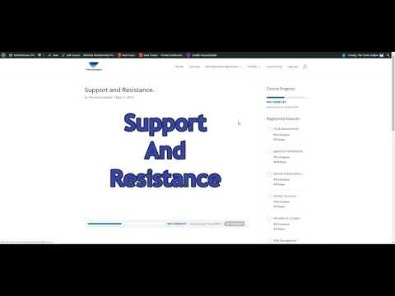Contents:

Doji has a lot of variations, for example, gravestone, long-legged doji, dragonfly, doji following a long bullish candlestick, etc., which could be confusing. First, you determine the time frame and support/resistance levels. Below, you can see the support and resistance levels in the H4 timeframe; I also marked the local high. In the classic Doji pattern, the opening price should match the candlestick’s closing price, but there can be minor discrepancies of several ticks. Many beginner traders have come across a strange candlestick, looking like a cross with little or no body. If the dragonfly doji is in an uptrend, then read about the northern doji.


Confirmation can be obtained by moving lower on the next candle. After a price drop, it is common for a doji to indicate that the price will rise. Moments like that then become the right time for traders to take buying actions.
Construction of the Dragonfly Doji Candlestick
Typically, this candle pattern will indicate a price reversal of a trend in the market. A lot of technical analysis patterns are limited by the biggest challenge, which is you can discover only after the event has occurred. On top of that the other challenge, is that this pattern rarely occurs and even if it occurs it needs to occur with larger volumes. The long lower shadow suggests that there was aggressive selling during the period of the candle. Since the closing and open is the same, it also indicates that the buyers were able to absorb the selling and push the price back up again. Dragonfly Doji Candlestick, gravestone doji is a candle stick pattern with open, high, and low close patterns.
- Please read this article to learn what a doji candlestick pattern is, how to trade with it, and how doji is different from another simple pattern called a hammer candle.
- Conversely, a filled body indicates a drop in the asset price.
- It primarily acts as a warning signal that a trend reversal may be coming up.
The Dragonfly Doji is typically interpreted as a bullish reversal candlestick chart pattern that mainly occurs at the bottom of downtrends. The Dragonfly Doji is a Candlestick pattern that can help traders see where support and demand are located. It can be used with other indicators to identify a possible uptrend. The dragonfly doji is a candlestick pattern that is formed when the high, open and close prices are equal, or very similar, whilst there is a long wick that has created a session low.
Investors can see this moment as a sign to get out of the trading trend. Apart from the regular pattern of Doji, we also have the gravestone pattern. This pattern can either be pre or post-the price decline or rise. Prices will go much lower than the open price and then close the day close to or at the open price.
The technical storage or access is required to create user profiles to send advertising, or to track the user on a website or across several websites for similar marketing purposes. Trading forex on margin carries a high level of risk and may not be suitable for all investors. That being said, as a continuation pattern, it shows that buyers are still active and could, therefore, create another opportunity to scale in or enter a trend midway through. However, it doesn’t always mean that the trend is guaranteed to change because of this dragonfly candle appearing.
Dragonfly Doji in a Downtrend
A https://g-markets.net/ candlestick forms when a security’s open and close are virtually equal for the given time period and generally signals areversalpattern fortechnical analysts. The dragonfly doji is a Japanese candlestick pattern that acts as an indication of investor indecision and a possible trend reversal. The dragonfly doji works best when used in conjunction with other technical indicators, especially since the candlestick pattern can be a sign of indecision as well as an outright reversal pattern. A dragonfly doji with high volume is generally more reliable than a relatively low volume one. Ideally, the confirmation candle also has a strong price move and strong volume. This situation causes the candle to be bodiless with only the wicks and a mark at the open/close price level.

Lawrence dragonfly doji candlestick meaninges is a Princeton University graduate with more than 25 years of experience as an equity and foreign exchange options trader for multinational banks and proprietary trading groups. Mr. Pines has traded on the NYSE, CBOE and Pacific Stock Exchange. In 2011, Mr. Pines started his own consulting firm through which he advises law firms and investment professionals on issues related to trading, and derivatives. Lawrence has served as an expert witness in a number of high profile trials in US Federal and international courts.
Doji usually forms at least a few bars after the price moves up or down, which indicates uncertainty the market participants will be taken to where the next price movement is. As the name suggests, a gravestone doji is an ominous sign that the current trend is being exhausted and is about to reverse. My book,Encyclopedia of Candlestick Charts, pictured on the left, takes an in-depth look at candlesticks, including performance statistics. It formed this bearish engulfing pattern showing rejection of lower prices.
Doji is a category of technical indicator patterns that can be either bullish or bearish. The Dragonfly Doji is a bullish pattern that can indicate a reversal of a price downtrend and the start of an uptrend. Note that most traders will verify the possibility of an uptrend by waiting for confirmation the following day. Like all candlestick patterns, to trade the dragonfly doji is very straightforward. The long lower tail of a dragonfly doji indicates that large amounts of selling have flooded the market, which caused downward pressure on the security price during a certain period.
Doji Candle trading FAQs
What does the appearance of the hammer candlestick pattern on the chart indicate? Read on to find out what the bullish and bearish hammers warn about. In addition, there is a type of candlestick with a small body and one or two very long shadows. The Japanese call such candlesticks “loss of sense of direction.” A doji is generally thought to be a more accurate indicator than a hammer because it is a bullish reversal signal.
Candlesticks depict the emotions of the traders by visually representing the size and colour of the candlestick. Have you ever wondered how technical analysts analyse charts and make trading decisions? Candlesticks are a technical tool that packs data for multiple timeframes into single bars.
If, after a long bearish candle, there is a gap down and a formation of the Doji candlestick, it’s a signal of possible reversal up. In order to confirm this, the third candle should be bullish and open with a gap up covering the previous gap down. Trading the dragonfly doji pattern can be difficult because it is entirely dependent on price action. If you want to start a trade, you should first look for confirmation, place a tight stop loss, and wait for the market to open. You’ll be able to determine a reasonable profit target after reading previous sections carefully.
Examples of a dragonfly doji
Apart from doji candles, you can also learn accurate candlestick patterns to reversal candlestick patterns at Indodax Academy. In a bearish reversal trend, the confirmation candlestick must be a bullish candle whose close is very clearly higher than the closing price of the Doji Dragon. A bearish candle will be a signal to continue or break the trend.
Following confirmation candlesticks, traders create orders immediately, as the confirmation candlestick makes trading decisions. Dragonfly doji candlestick pattern on bitcoin chart in the cryptocurrency marketIn the second example, a bullish dragonfly doji appeared after a bearish one on a daily timeframe. These candles prevented the price to go lower, and they showed a sign of support, so price continued to go higher.
A bullish dragonfly doji candlestick is a candlestick pattern that can be found in a price chart of any market, from stocks to commodities. The dragonfly doji shows that the market was in a state of indecision during the period of time that the candlestick covers. The dragonfly doji has a long lower shadow and a small body that is located at or near the highs of the trading range.
If a large stop loss is incurred, the potential reward of the trade may be negated. There are several techniques other than candlestick patterns that must be used to exit a trade when and if profitable. A Dragonfly Doji is a type of candlestick pattern that can signal a potential reversal in price to the downside or upside, depending on past price action. Following a price decline, the dragonfly doji shows that the sellers were present early in the period, but by the end of the session the buyers had pushed the price back to the open.
You can see that this is a Dragonfly Doji, this wick simply shows you rejection of lower prices. Don’t make this mistake of just going short just because you see a Doji in an uptrend. Often what I see traders do is that when the market moves up higher and then there’s a Doji. You can see the open and the close is the same level, this is why you see a straight line on the chart. This means traders need to find another location to stop losses, or they may need to stop trading. The tail appears when the price opens at a high and then drops to a low due to a lot of selling.
Stephens & Co. Maintains Overweight on Westinghouse Air Brake … – Benzinga
Stephens & Co. Maintains Overweight on Westinghouse Air Brake ….
Posted: Thu, 16 Feb 2023 08:00:00 GMT [source]
Traders should also note that just because you see a confirmation, that does not necessarily mean that there will be a reversal. Investors usually wait for one day after the pattern to act on this. It’s better for you to looking for confirmation first and put a tight stop loss to open a trade. DTTW™ is proud to be the lead sponsor of TraderTV.LIVE™, the fastest-growing day trading channel on YouTube.
The dragonfly doji, like all the other candlestick patterns, should not be used in isolation. The best approach of using it is to combine it with other technical and price action strategies. For example, you can use indicators like the Average True Range and double moving averages. When the price of a security has shown a downward trend, it might signal an upcoming price increase. If the candlestick right after the bullish dragonfly rises and closes at a higher price, the price reversal is confirmed, and trading decisions can be made.
- The dragonfly pattern is a candlestick pattern that shows the bear’s failure to maintain control of the falling price.
- It’s essential to confirm this assumption using other indicators before you take action.
- This candlestick is often a sign that investors do not know which direction the market should take.
A Gravestone Doji is a sign of weakness because it shows you rejection of higher prices. In this case, you notice that the highs and the lows of the Long-legged Doji actually became resistance and support on the lower timeframe. But this time around, the upper and lower wick is very long, they are very long. As a swing trader, you can look to take profit at the nearest swing high or at resistance area. Notice that the price came into the area of support, rejection of lower prices. Because if you try to do that, you’re going to suffer in trading because there are hundreds and hundreds of patterns.